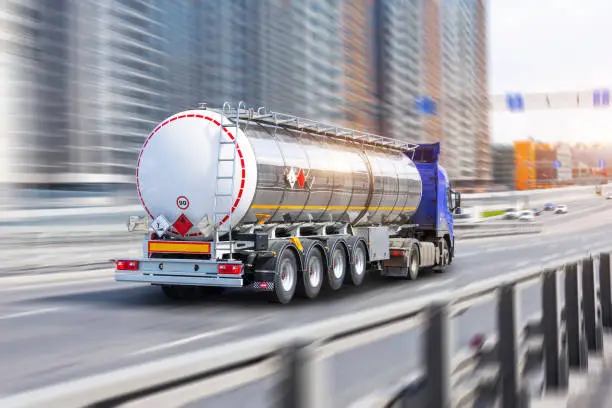In many parts of the world, especially in areas facing water scarcity or lacking robust infrastructure, sweet water tankers serve as a lifeline, delivering essential potable water to homes, businesses, and communities. These specialized vehicles play a critical role in bridging the gap between water sources and end-users, ensuring that safe and clean drinking water is accessible even in challenging circumstances. Understanding the intricacies of sweet water tankers, from their design to their operational best practices, is crucial for anyone involved in or reliant on this vital service. The primary objective of a sweet water tanker is to maintain the purity of the water it transports, a mission that requires careful consideration at every stage.
At its core, a sweet water tanker is a mobile reservoir designed to transport water fit for human consumption. Unlike tankers used for industrial liquids or wastewater, sweet water tankers are constructed from food-grade materials that do not leach harmful substances into the water. Stainless steel or specialized food-grade plastics are common materials for the tank itself, ensuring chemical inertness and resistance to corrosion. The interior surfaces are typically smooth and non-porous, minimizing the areas where bacteria or algae can attach and grow. This fundamental design principle is the first step in guaranteeing a safe water supply from any sweet water tanker.
Beyond the tank material, the design of the sweet water tanker also incorporates features aimed at preventing contamination. Airtight seals on access hatches and valves prevent external pollutants from entering the tank. Filtration systems, often integrated into the loading and unloading mechanisms, further enhance water quality by removing sediment and particulate matter. Ventilation systems are designed to allow air exchange without introducing airborne contaminants. Understanding these design elements is essential for operators to ensure they are handled and maintained correctly, preserving the integrity of the water within the sweet water tanker.
The process of sourcing water for a sweet water tanker is equally critical. Water should only be drawn from approved, tested, and reliable sources. These sources are typically municipal water treatment plants or certified boreholes known to produce potable water. Before loading, the water source itself should ideally undergo quality testing to confirm its suitability. Reputable sweet water tanker operators maintain strict protocols for water sourcing, often requiring documentation of water quality from the origin point. This rigorous vetting process is fundamental to delivering clean drinking water.
Loading the sweet water tanker is another phase where vigilance is paramount. Hoses used for filling must be clean, dedicated solely to potable water, and free from any kinks or damage. Cross-contamination can easily occur if the same hoses are used for non-potable water or if they are not stored hygienically. Pressure and flow rates during loading should be managed carefully to avoid turbulence that could stir up any settled impurities or damage the tank’s internal lining. Personnel involved in loading should adhere to strict hygiene standards, including wearing appropriate protective gear.
Transportation of the sweet water tanker also requires specific considerations. The vehicle should be driven smoothly to minimize water sloshing, which can accelerate wear and tear on the tank and its internal baffles. Roads chosen for transport should ideally be well-maintained to prevent excessive vibrations and impacts that could compromise the tanker’s integrity. The duration of transport also plays a role; while a well-maintained sweet water tanker can keep water safe for extended periods, minimizing transport time whenever possible helps to preserve optimal water quality, especially in hot climates where microbial growth can be accelerated.
Upon arrival at the delivery point, the unloading process for the sweet water tanker demands the same level of care as loading. Delivery hoses must be clean and handled with extreme hygiene. The receiving container or system should also be clean and ready to accept potable water. Operators should ensure that the delivery point is free from contaminants and that the water flows smoothly without undue pressure or splashing that could introduce airborne particles. For domestic deliveries, advising consumers on the proper storage of the received water is also an important part of ensuring continued safety.
Regular cleaning and maintenance are the cornerstones of ensuring a sweet water tanker remains a reliable source of clean water. This includes internal cleaning and disinfection, external washing, inspection of all components (valves, hoses, pumps, filters), and immediate repair of any damage. A detailed maintenance schedule, adhered to rigorously, prevents the accumulation of bacteria, algae, and sediment that can compromise water quality. Furthermore, periodic water quality testing of the water delivered by the sweet water tanker is essential to verify that all protocols are effective. These tests confirm the absence of harmful microorganisms and ensure chemical parameters are within safe limits.
Training of personnel involved in the operation and maintenance of sweet water tankers cannot be overstressed. From drivers to maintenance crews, everyone must understand the critical importance of their role in delivering safe water. Training should cover hygiene protocols, proper handling of equipment, identification of potential contamination risks, and emergency procedures. A knowledgeable and responsible team is the ultimate guarantee of consistent quality from any sweet water tanker.
In conclusion, sweet water tankers are indispensable in the global effort to provide access to clean and safe drinking water. Their role extends far beyond mere transportation; they are an integral part of the public health infrastructure. By understanding their specialized design, adhering to stringent sourcing and operational protocols, and committing to meticulous cleaning and maintenance, we can ensure that these vital vehicles consistently deliver on their promise: providing safe, clean, and life-sustaining water to communities that need it most. The reliability of a sweet water tanker directly impacts the health and well-being of countless individuals, making this essential guide a fundamental resource for anyone involved in this critical sector.
